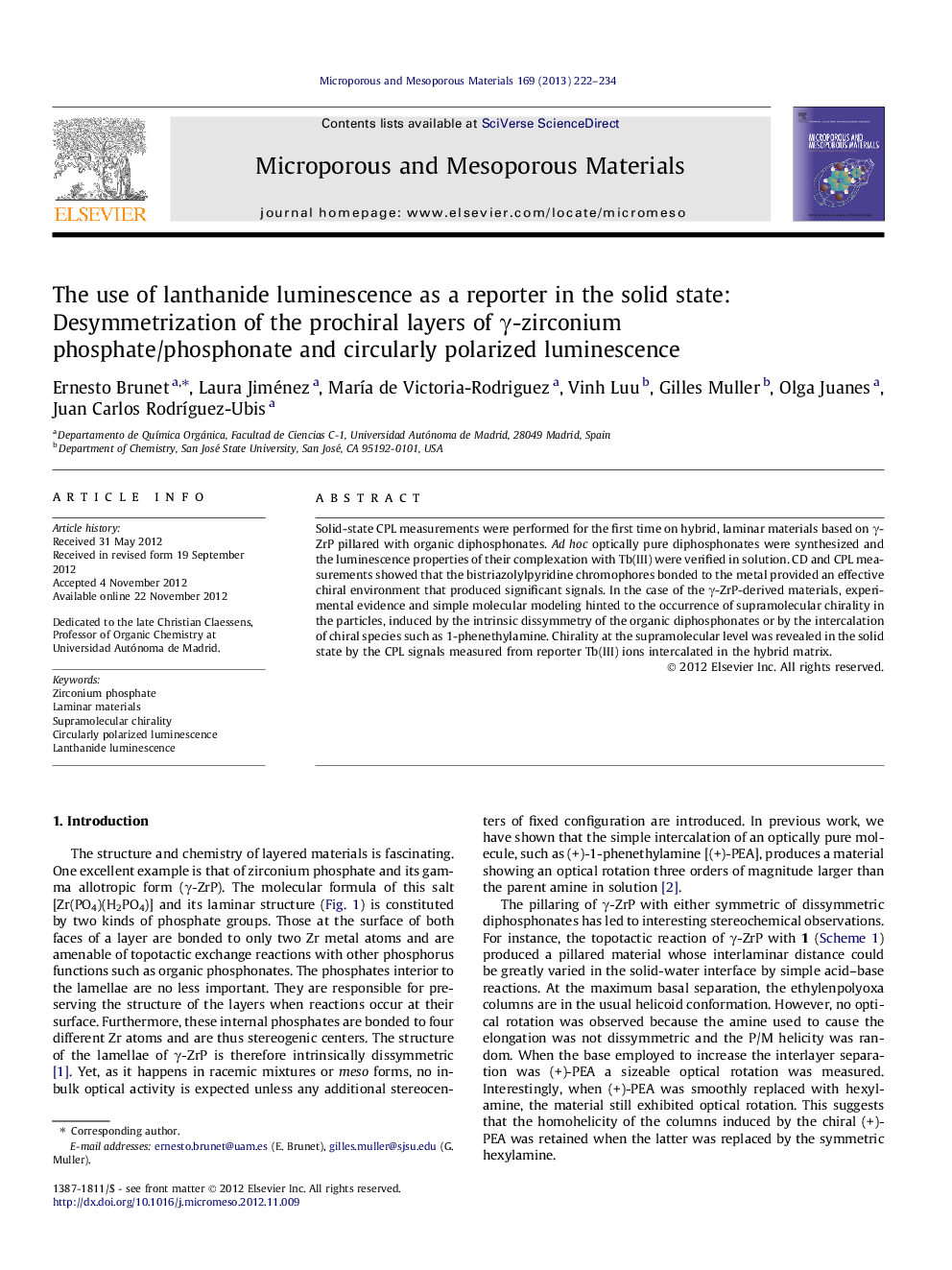| Article ID | Journal | Published Year | Pages | File Type |
|---|---|---|---|---|
| 73718 | Microporous and Mesoporous Materials | 2013 | 13 Pages |
Solid-state CPL measurements were performed for the first time on hybrid, laminar materials based on γ-ZrP pillared with organic diphosphonates. Ad hoc optically pure diphosphonates were synthesized and the luminescence properties of their complexation with Tb(III) were verified in solution. CD and CPL measurements showed that the bistriazolylpyridine chromophores bonded to the metal provided an effective chiral environment that produced significant signals. In the case of the γ-ZrP-derived materials, experimental evidence and simple molecular modeling hinted to the occurrence of supramolecular chirality in the particles, induced by the intrinsic dissymmetry of the organic diphosphonates or by the intercalation of chiral species such as 1-phenethylamine. Chirality at the supramolecular level was revealed in the solid state by the CPL signals measured from reporter Tb(III) ions intercalated in the hybrid matrix.
Graphical abstractFigure optionsDownload full-size imageDownload as PowerPoint slideHighlights► Prochiral Zr phosphate (ZrP) was desymmetrized with chiral phosphonates and/or amines. ► The chiral phosphonates contain the bistriazolilpyridine (BTP) chromophore. ► BTP efficiently sensitized the emission of lanthanides in solution and within ZrP. ► Chiral BTP:Ln complexes showed circularly polarized luminescence (CPL) activity in solution and solid state (ZrP). ► The highest CPL activity was attained with non-chiral BTP and chiral phenethylamine.
